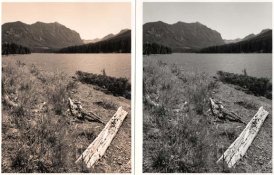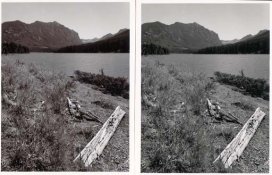Hi Harrigan,
I've done a little sulphide / selenium split-toning, and results will depend on the paper you use.
If it's a chlorobromide like Ilford Galerie, the selenium will be much more visible - as you probably know, selenium builds up in the dark areas first. With papers like Galerie, you can watch the print change colour and decide when to pull the print. Then you wash the print, bleach and sepia tone it. Areas that were selenium toned are not affected by the bleach.
VC papers don't generally tone as well as graded papers, and most RC papers don't change colour in selenium at all. Ilford Multigrade FB changes to a subtle, cool blue-grey. In contrast, Galerie will turn a mauve-ish brown colour.
If you use Ilford Multigrade FB, i'd advise using the sepia toner first. This is because the change is so much more difficult to observe.
Use a more dilute bleach than recommended - this gives more control over the process. Bleach the print until the highlights begin to fade, pull the print and wash it for five minutes until the yellow stain is gone. Drain the print and add the sepia toner - the print will tone in light areas but not lower mid-tones and shadows. If you get blue spots with sulphide, your water is contaminated by iron. To avoid this, use a water filter.
After sepia-toning, wash the print well and you can selenium tone at will.
One more tip: make sure you fix and wash the prints properly before toning. Unfixed silver residues will accept toner.
I don't know about odourless thiocarbamide-based toners, but sodium sulphide-toned prints will change colour in the selenium. IMO, sulphide gives much nicer results anyway. It's worth putting up with the rotting egg smell. When using sulphide you must put all undeveloped silver-halide materials somewhere the smell can't reach them as it can fog films and papers.
Selenium can build up in the body and can be absorbed through skin, therefore minimise conatact, wear gloves and don't inhale the fumes.
HTH,
kevs












